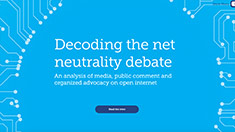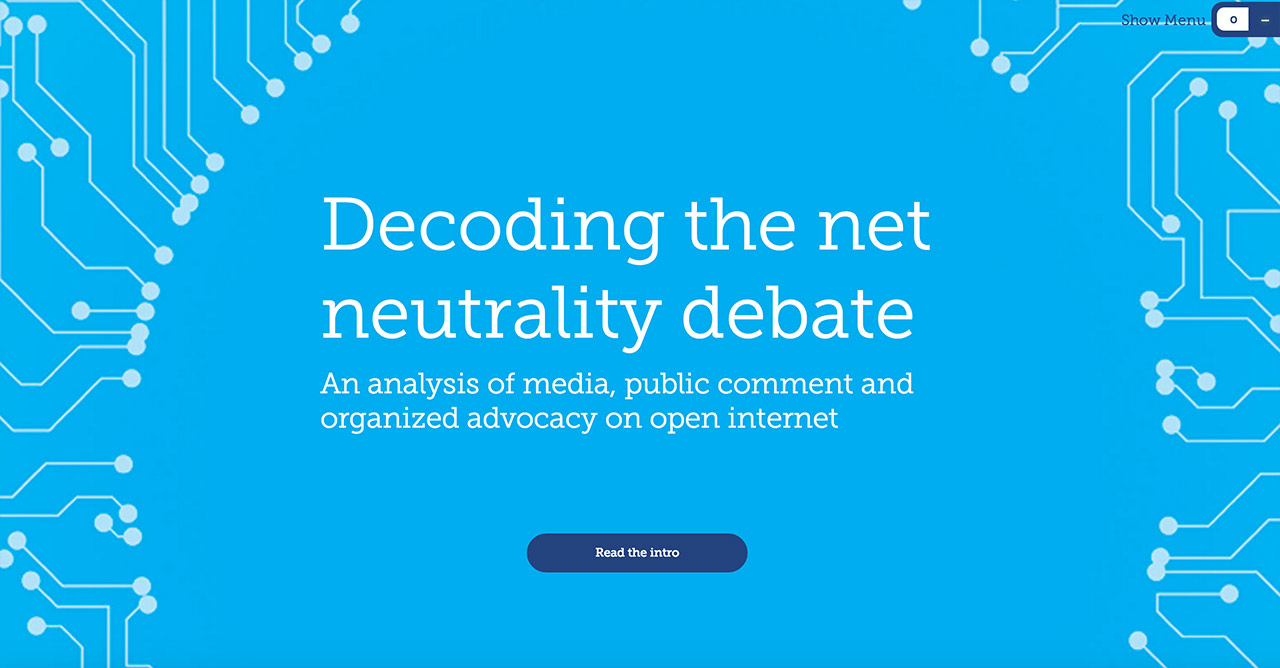Click above to explore the interactive report.
Who should control the Internet? A new report released today by the John S. and James L. Knight Foundation explores media coverage, public opinion and advocacy surrounding the Federal Communications Commission call for public comment on regulation of the Internet. Prepared by data analysis firm Quid, the report helps policymakers and citizens better understand the net neutrality debate—encouraging more informed regulations and greater public engagement.
Related Links
Explore the interactive report
Browse the report PDF on Slideshare.net
“New report uses data to reveal fresh insights into net neutrality debate” — Press release (12/11/2014)
The report analyzes data from media reports, Twitter, lobbying disclosures and 1.1 million public comments made to the FCC about Internet regulation between Jan. 1 and July 18, 2014; the FCC has received more than 3 million comments to date. Through detailed analysis and data visualizations it unveils the main narratives and influencers shaping the debate, highlighting several key takeaways:
• Public opinion expressed on Twitter and in FCC comments, was overwhelmingly pro net neutrality. Taken with the entire body of comments sampled, there weren’t enough unique or organic anti-net-neutrality comments to register on the map.
• Despite the complexity of the issue public engagement is high with 40 percent of the 1.1 million comments analyzed coming from unique responses, as opposed to form letters or templates prepared by advocacy groups; this is higher then the typical 10 to 20 percent seen with other regulations.
• Large Internet service providers, such as Verizon, Comcast and AT&T, have generally avoided the public debate and mainly spent money on lobbying efforts, collectively reporting over $238 million on filings mentioning net neutrality.
• The net neutrality debate was covered mainly as a technology story or a political story, with 57 percent of coverage falling into those categories. There was little coverage by local (2 percent) and financial (6 percent) news sources.
• Male and urban voices were overrepresented in the debate with 69 percent from men and 63 percent from metro areas.

